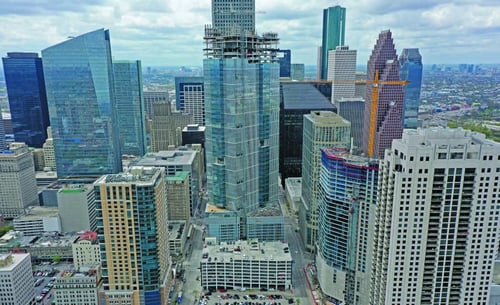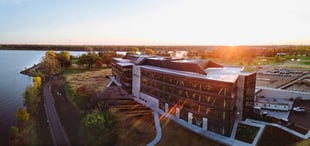Gilbane Construction and The Texas Tower
Whether you’ve just heard about us or have been reading our content for a while, it will come as no surprise that we are huge advocates of reimagining construction on a broader level. Our tagline is “revolutionizing the industry and changing the world.” When we think of changing the world, we usually think of morally inspiring roles like doctors and nurses, or boundary-breaking innovative industries like technology and aerospace. We don’t usually think about the bright yellow safety vests and hardhats of construction!
But the truth is that without construction, we wouldn’t have the hospitals that allow those doctors and nurses to perform lifesaving work, and we wouldn’t have the buildings that let people experiment, make mistakes, and try again. Construction plays a huge role in shaping not only our lives but our communities and the people that move through them as well.
As a result, we are also proud advocates of the work that our clients do to bring jobs, beauty, and enrichment to local cities and neighborhoods. And we especially love celebrating work that is particularly innovative or groundbreaking. In this case, we’re excited to have both.
Gilbane Building Company is a general contractor with a rich and storied history. Gilbane’s founders, Thomas and William Gilbane, were born to Irish immigrants in the 1840s United States. They would eventually develop a carpentry business in Rhode Island, which would then blossom into the multi-region general contractor that it is today. Now, Gilbane performs projects in the civic, educational, health, and federal sectors. They also offer a wide variety of services, from construction, design-build, disaster recovery and reconstruction, and BIM/VDC.
Most recently, Gilbane was chosen by project owners Hines and Ivanhoe Cambridge to construct a brand-new addition to the downtown skyline of Houston, Texas: a forty-seven-story high-rise that will house offices, parking garages, outdoor gardens and balconies, a large conference room, and even a fully outfitted fitness center.
The Texas Tower is particularly interesting for several reasons. Some of the most impressive include:
- Underground tunnel connections
- Diagonal position to allow for unique views of the city
- Designed to withstand flood events
- One of the heaviest towers ever constructed in downtown Houston, around 190,000 tons
Additionally, it embraces the emerging trend of creating architectural space that is not only impressive aesthetically but that also provides practical use. As noted, having access to a full-service gym and places to eat, talk, and relax outdoors is a huge component of employee wellness these days, and falls in line with the idea that offices should be places that allow employees to feel seen and treated as individuals rather than just cubicle drones.
 Beck Technology partner, Gilbane, is building Houston's Texas Tower with a unique diagonal tower to maximize the views of downtown. (Photos courtesy of Gilbane Building Company)
Beck Technology partner, Gilbane, is building Houston's Texas Tower with a unique diagonal tower to maximize the views of downtown. (Photos courtesy of Gilbane Building Company)On top of that, the Texas Tower is a Construction Career Collaborative (C3) project. Founded in late 2009, C3 is a Houston-based industry organization that was borne out of the urgent need to attract more fresh talent to the construction workforce to replace the fast-retiring older generation. C3 is an alliance of project owners and general contractors who are dedicated to ensuring the latest and best construction safety practices, as well as maintaining the development of continuous skills training for construction career paths.
In order to qualify for membership or recognition with C3, a company and/or project owner must exemplify all of the standards mentioned above. As a result, the Texas Tower will be built to the highest standards that project owner Hines has ever commissioned. When completed, LEED Platinum and Silver ratings will be sought for the building.
Finally, the Texas Tower will play a role in encouraging a holistic view of construction: it was built specifically with the intent of integrating work with the existing neighborhoods surrounding it. Special emphasis has been placed on creating accessible entry points to nearby businesses, as well as making sure that there are plenty of spaces to encourage communal environments, such as the aforementioned outdoor terraces and large conference rooms.















